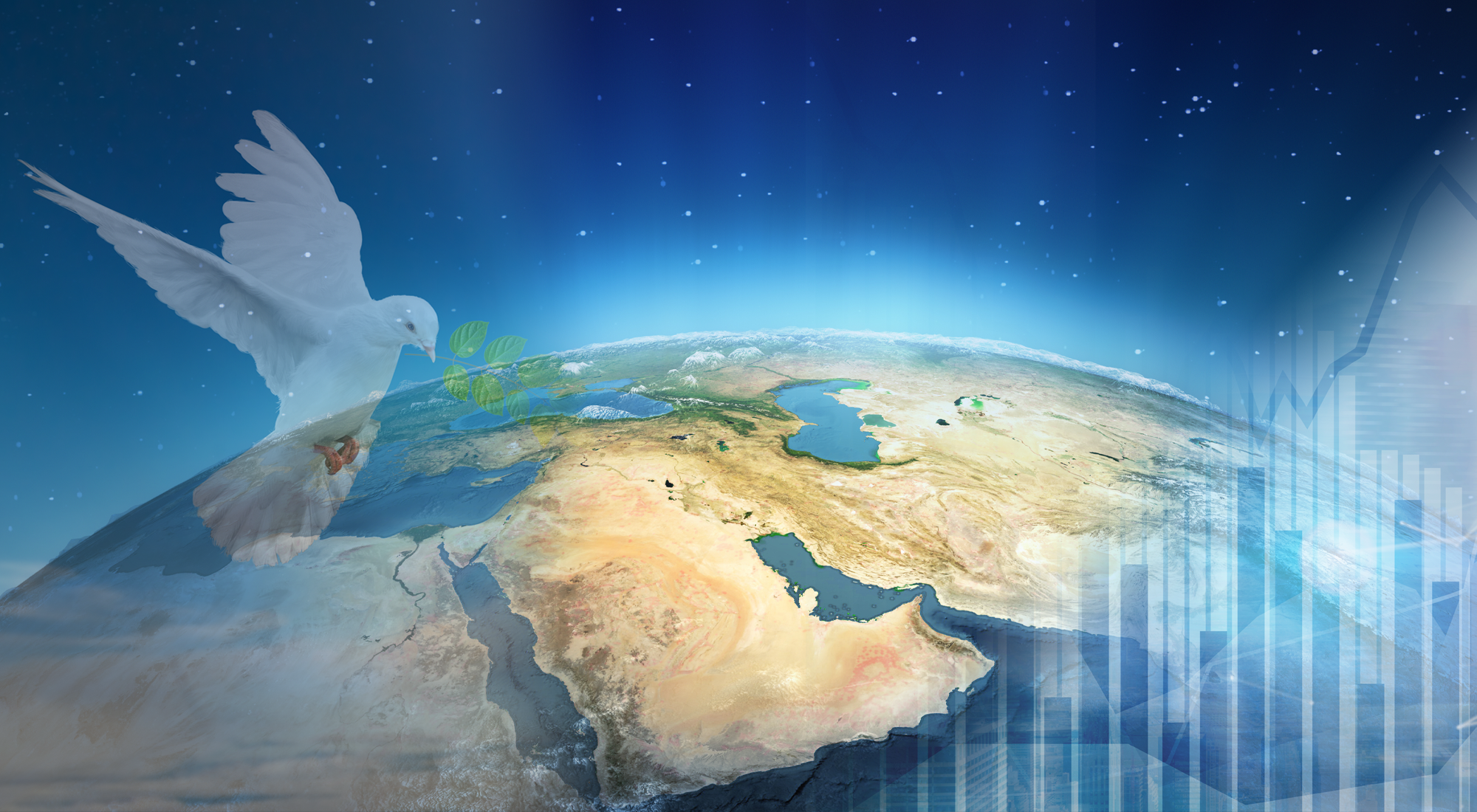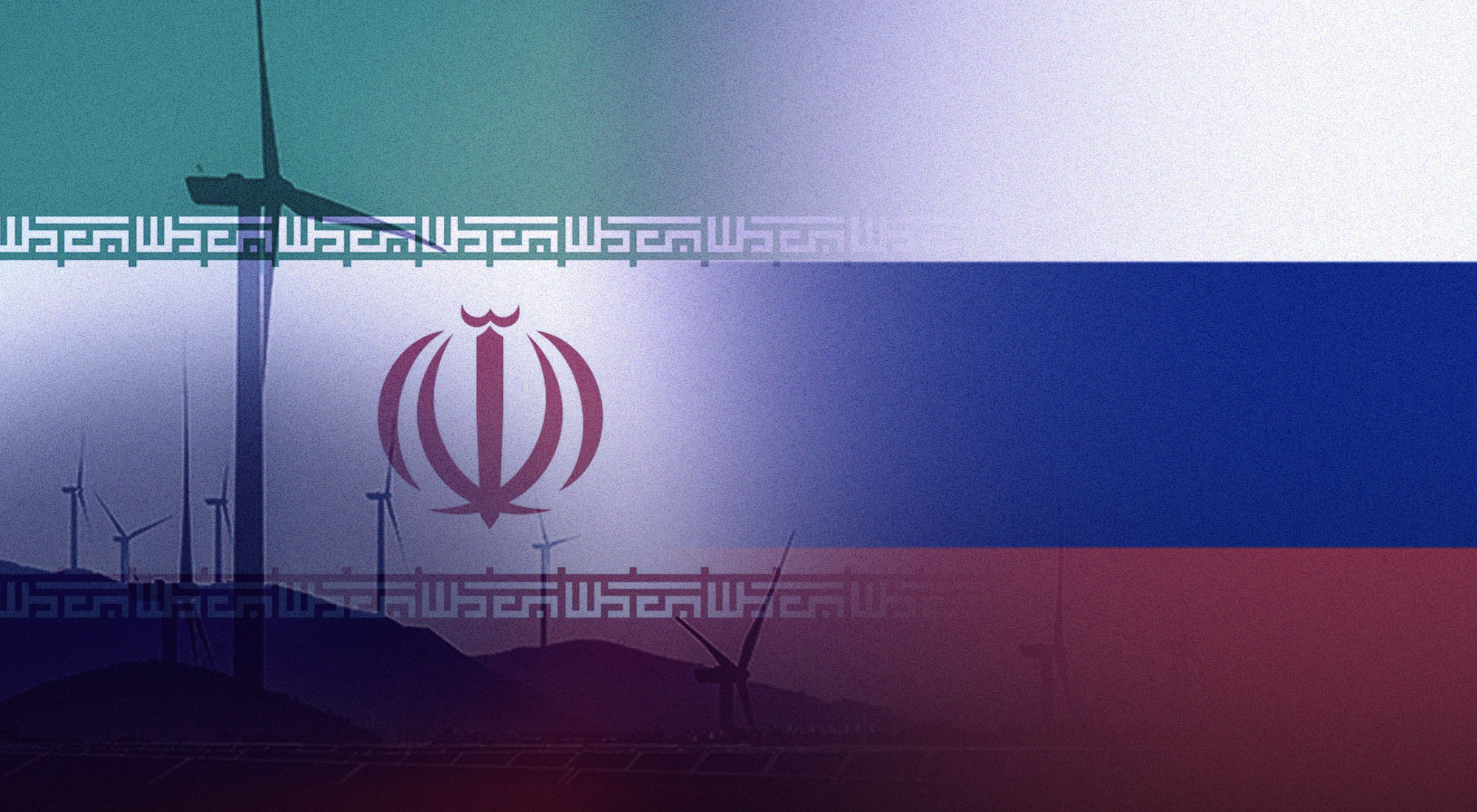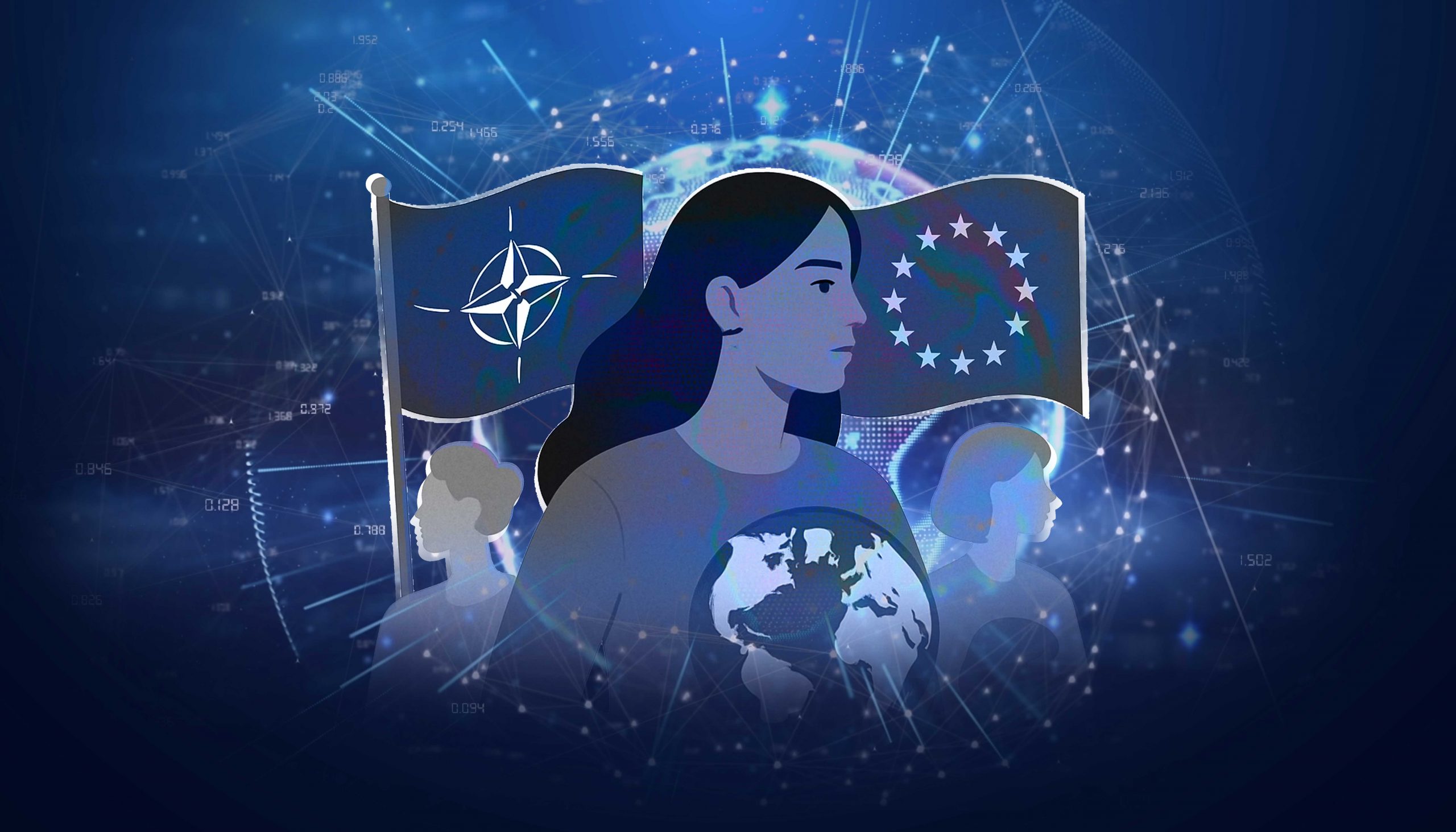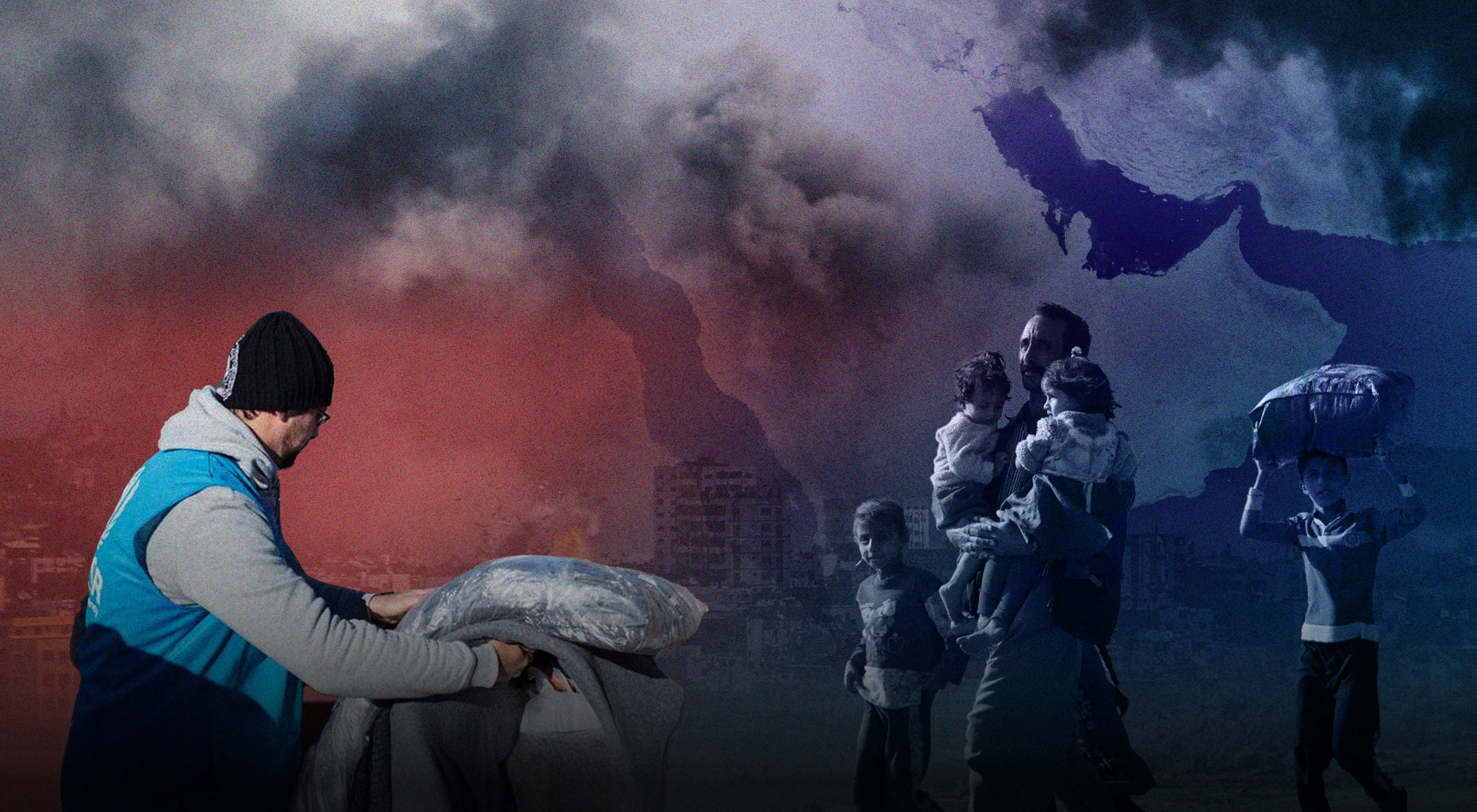The MENA/WANA Region
What is often referred to as the “Middle East and North Africa” (MENA) in Eurocentric terms is a region that stretches from ancient Mesopotamia up to the Gibraltar Strait, and from Anatolia to the Gulf of Aden (though this article will refer to this region by its proper geographical and not post-colonial name “West Asia and North Africa” – WANA). It is the cradle of our modern civilization, but it is still the most volatile and unstable region of our planet. A mix of domestic and international issues, economic and political challenges, cultural and identity questions have defined the region as a rich but also insecure area that is still struggling to develop and integrate into the world.
This article argues that even a volatile region like WANA could find its stability. The theory of “triangulating peace” [1] focuses on three main factors coming from International Relations (IR) theory: political domestic transitions, levels of economic integration and participation in international organizations. Another factor that could impact on the future process of stabilization of the region is the scientific and technological revolution we are experiencing in our modern societies. These four elements, therefore, could bring more competition or cooperation among regional powers, depending on whether the states’ predominant approaches in their foreign policy are based on trust and pragmatism [2] or mistrust and ‘power politics’, which could either keep the region in a state of insecurity or bring about real stability in the future – not discounting external factors.
One of the main problems of the region is that many countries want to control, at least a part of, the Mediterranean Sea, which is a small body of water but a crucial one on the world stage. The Mediterranean connects the Atlantic with the Indo-Pacific Ocean passing through the Red Sea and also the Gulf, so it is a ‘sea among oceans’ rather than a ‘sea among lands’ – as the Latin name suggests – and represents the economic and political needle of world balance. This is the reason why global powers want to have a voice in the Mediterranean, in primis Russia and China, who aim to defy the American hegemony and post-World War Two order, based on NATO on one hand and Arab alliances on the other. What Russia wants to do is use more maritime and military power, from the Levant with its naval base in Tartu, and from the Black Sea with its naval base in Crimea; while China, being more of a land and economic power, uses its infrastructure and logistical prowess in the construction of the New Silk Road in African and European continents. But besides this Great Powers Competition, the regional powers are constantly balancing between conflict and cooperation, from proxy wars to new attempts for agreements, depending on what they believe is the best strategy to achieve their national goals. This is the real issue that needs to be discussed by the regional powers, in particular by Saudi Arabia, Egypt, Turkey and Israel, if they want to have a “Grand Bargain” in the future to facilitate a process of stabilization and development, similar to what the European continent did during the last century, especially in light of having gone through two world wars.
This paper will proceed by briefly examining these four areas at the theoretical level and then moving on to provide some examples and case studies to better understand whether political transitions, economic integration, regional organizations and the modern technological revolution could bring about what the region has long been waiting for.
Some theoretical frameworks
Kenneth Waltz, the founder of the International Relations theory called Neorealism, argues in his article entitled “Structural Realism after the Cold War” [3] that there are challenges to conventional Realism. According to critics, Realism does not explain the high correlation between peace and cooperation on the one hand and democracy, economic interdependence or international institutions on the other. In their book “Triangulating Peace”, Russett and Oneal instead support the Constructivist view of those three elements, which in their view increases cooperation and peace. Twenty years of facts on the ground in the WANA region show that both theories may be true, depending on how the three variables are used, be it with a trusting and pragmatic attitude or a perspective based on national mistrust and power politics. A pragmatic diplomatic approach actually could “transform enemies to friends”, as Charles Kupchan claims [4], via strategic concessions and multilateral meetings, which would increase the trust and commitment between all parties involved. Furthermore, in addition to the traditional three variables, we also have new “Emerging Disruptive Technologies” (from quantum computing to AI and from autonomous systems to big data) that severely impact all areas of politics, the economy and society. Humankind is passing through a scientific and technological revolution, which could lead to some form of “speciation” similar to that described by Yuval Harari and others [5]. This is what Kuhn would have called a “scientific revolution” [6], a paradigmatic shift resulting not from accumulation but from ‘revolution of knowledge’ that could make international politics more difficult to explain and make sense of, but would open up new possibilities in concepts such as Quantum Diplomacy [7]. Again, a pragmatic approach by visionary policy makers would enable this revolution to create potential space for cooperation, development, peace and stability.
How does the WANA region fare in relation to these four elements? Are these factors leading to more competition or cooperation? And how could these factors actually increase instead of hinder cooperation and stabilization? Let us briefly examine them one by one.
Political domestic issues
At the domestic level, the region is currently going through transitions that are very complex and intertwined. Some of the political science literature tells us that authoritarianism increases repression of minorities [8], fomenting possible new conflicts, particularly in this age of proxy wars and hybrid warfare. But political transitions towards democracy also facilitate new instabilities, as was the case with some of the revolutions of the Arab Spring. All countries that experienced revolutions more than ten years ago failed and are now engaged in proxy wars, headed by authoritarian regimes of fragile democracies. This includes Tunisia, which was considered the successful exception of the Arab Spring until the current President Kais Saied shut down the government and suspended the parliament last July, on the basis that the political parties were unfit to hold office. Hence, the consequence of liberalization is not necessarily stability and “triangulating peace”, as democratic countries might not make wars among themselvesultimately lead to more stability as IR literature states. Democratization is a process that is lengthy and might bring more instability and insecurity than maintaining the former autocracy.
Therefore, it seems that it is not the political model used in the transition, but the inclusion of different parts of society that were excluded from the traditional authoritarian regimes that needs to be taken into consideration. This can be done gradually by Republics that are not necessarily completely free democracies but more “controlled democracies” like Algeria, which implemented Constitutional reforms in 2020; or by monarchies like Morocco or the ones of the Gulf, which are implementing a gradual inclusion of women, for example, in the society and in the polity. There is no “one model fits all” of the political transitions that the WANA region, and Africa too for that matter, will pass through in the next decades. It is up to each society to decide their path, with the main criteria being that of the respect of the rights of all minorities of that country, like the Kurds in Turkey or the Copts in Egypt, who need to be economically and politically included sooner or later if the country wants to flourish and help the region to stabilize.
Economic interdependence
At the economic level, regional competition is hindering the possible spaces for economic interdependence, and domestic level statism and corporatism are blocking liberalizations and economic reforms in many countries. In Tunisia, for example, the state is still controlling the economy with public industries and a handful of families and business groups. Bureaucracy, systematic corruption, and decaying legislation often discourages investment from the private sector or international companies, hindering the development of the country. In the case of excessive statism, evident in the majority of the countries in North Africa, it is difficult to have economic interdependence because the states often do not trust an economic integration with other countries essential for “triangulating peace”, or are too slow to take action, which is why the WANA region is the least economically integrated region in the world. With the exception of the Gulf Cooperation Council (GCC) countries, for example, the energy sector in WANA is interconnected but not integrated [9].
In contrast, when countries use a pragmatic approach – as the UAE is doing with Israel and Turkey –economic cooperation can be strengthened. In the case of the UAE, for example, the Abraham Accords brought a lot of economic exchange as well as financial agreements. One example of this is the UAE’s $10 billion investment fund in Turkey. The energy sector is a potential area for more integration, as was the case for the EU, which was born out of a “coal and steel” agreement. The current energy transition towards renewable energy, coupled with the consequences of climate change and urbanization, might increase integration among WANA countries, leading to collaboration on the green energy transition or the construction of smart cities, for example. Energy cooperation in the region could also have an impact on a global level; if Turkey, Algeria or the Gulf countries increase their support of European energy, allowing the EU to decouple from Russia, then the relationship between the WANA region and the EU could improve, based on a new economic cooperation. Again, facts on the ground in the region show that pragmatism is the best strategy to build economic interdependence, based not on old political identities and conflicting national interests, but on rational choices working toward a future of common stabilization and development.
Regional integrations
Despite the common ground based on cultural and religion affiliation, a collective security community [10] and even an international society [11] is seemingly difficult to build in the WANA region because of the “regional security complex” [12]. The problem of conflicting sectarian lines coming from past identities, fueled by current narratives of power politics, may lead to great power competition or terrorism. In terms of security dynamics, the long Cold War between Iran and Saudi Arabia (and their allies) has fueled the region with instability. This already volatile situation has been rendered more fragile with the recent arrival of Turkey into the geopolitical mix. Regional integration in such a situation has been difficult. The Arab League, for example, for a long time represented the only regional organization where WANA countries could engage in dialogue and try to solve their disputes or internal domestic needs for consensus and reconciliation, as in the cases of Lebanon, Yemen or Iraq [13]. Recently though, this regional forum failed in many attempts to solve conflicts like those in Libya or Syria, while another regional organization showed stronger visions and abilities to solve disputes among its members.
Nevertheless, after the US “retreat” from direct military interventions in the region, the pragmatic approach to national security of some countries seems to have increased trust and opened space for defense and security cooperation, like the recent Turkey-Qatar-UAE-Saudi-Egypt-Bahrain rapprochement [14], the reintegration of Qatar into the GCC, and the détente among traditional rivals like Israel and some Gulf countries. The signing of the Abraham Accords between Israel and the two GCC members later influenced other rapprochements with Israel by Morocco and Sudan. Through the Istanbul Cooperation Initiative since 2004 the GCC has also proven to be a good partner of NATO, the North Atlantic political-military alliance, which could represent a model for the region. This is not only because NATO is the oldest military alliance in human history, but also because it brings together countries at different cultural and political levels, such as Turkey and European countries, showing how different sensibilities can coexist even in the long run if pragmatism wins over competing political and cultural identities. Another recent example is the joint, five-day exercise in the Red Sea by naval forces from the US, Israel, the UAE, and Bahrain, which was the first time Israel and the two Gulf Arab states conducted a combined drill at sea [15]. All these elements could represent an embryonic attempt at institutional integration, which with pragmatic approaches could really bring about a “Grand Bargain” among regional powers, ultimately leading to a regional integrated system of political and military alliance that would bring stability to the region.
Technological disruptions
Finally, at the technological level, there are so many differences and challenges that it is difficult to see how the technological revolution will impact the region; however, there are many possibilities for cooperation towards peace and development in this field. The high level of digitalization in Saudi Arabia, for example, contrasts substantially with that in Yemen [16], which has the forth slowest broadband in the world. The number of young Arabs who want to start their own business in the next five years has increased by 55% in the Gulf compared to 22% in the Levant [17], showing a strong difference between the youth of the GCC who are launched towards the future and the youth of the poorer levant region who feel disenfranchised. At the same time, a recent maritime exercise in the region with unmanned systems and AI technology, organized by the US Navy, included 60-nations from the Middle East region and other parts of the world, clearly demonstrating how technological development can improve cooperation among partners of the region if used in a pragmatic and constructive way by political establishments [18].
The technological revolution could, therefore, represent a fourth element that could potentially bring stability and peace, or more instability and conflict, depending on how states utilize it. For example, Electronic Data Transfers (EDTs) can be used for more war, as we have seen with the drones used in Algeria and Morocco, and more recently in Yemen; or be used for more peace, as has been the case with the new integrated electrical systems, like the Pan-Arab Electricity Market (PAEM) that will make WANA home to one of the largest integrated electrical systems in the world. Actually, the PAEM is a clear example of how technology and current climate security, coupled with clean energy transition and the exponential growth of renewable energy technologies, can contribute to building trust and resolving shared concerns about security and sovereignty, ultimately boosting integration [19]. A pragmatic approach to technology, along with diplomacy, will ensure the use of technological revolution for more cooperation and integration, not for competition and conflict. Again, as Kupchan argued, diplomatic engagement with rivals, and strategic concessions at the technological level, will promote mutual trust that is at the basis of the rapprochement between former adversaries.
Conclusions
The WANA region is still the most volatile and unstable region in the world. Its intra-state rivalry and competition, mixed with socio-economic threats and problematic new political transitions, are not helping in “triangulating peace” as proposed by the theoretical framework of this brief article. However, there is a way out. As the EU sets out “principled pragmatism” as its modus operandi, to bridge the gaps between values and principles on the one hand and interests on the other, the WANA region can follow suit. A pragmatic approach could move things in the right direction, as the recent actions of the UAE and other WANA countries have illustrated. The EU, also a product of enduring rivalries and war, could act as a beacon and external balancer, in place of the US, for a similar union.
It is not constructive to insist on old identity politics and principles that only serve to fuel rival nationalisms and create divisions on sectarian lines. Establishing a balance between national views and pragmatic interests could lead to the Grand Bargains needed in the region to foster some stabilization in the long run. The area needs visionary leaders that propose inclusive frameworks for dialogue, confidence building measures, economic interdependence and also a new inter-generational pact. This will not only bring stability to the region, but will also make it an important area for the future building of a new world order, where different integrated regions can talk peer to peer to reach agreements on how to better solve the global problems facing the Earth and humankind.
References
[1] Russet, Bruce and Oneal, John. Triangulating Peace: Democracy, Interdependence, and International Organizations, W. Norton & Company, 2000.
[2] Pragmatism is a social theory that emphasizes the primacy of practice and creativity. It was largely ignored in international relations until constructivism criticized realist approach, explaining for example German behavior after reunification (for which realism predicted major change in the country’s foreign policy due to increased German power). See on this: Franke Ulrich and Gunther Hellmann, “American Pragmatism in Foreign Policy Analysis”, Oxford Research Encyclopedia, 2017.
[3] Waltz, Kenneth N. “Structural Realism after the Cold War”, International Security, Vol. 25, No. 1, pp. 5-41, The MIT Press, Summer 2000.
[4] Kupchan, Charles. How Enemies Become Friends: The Sources of Stable Peace, Princeton University Press, 2012.
[5] Harari, Yuval. Homo Deus: A Brief History of Tomorrow, Harper, 2017.
[6] Kuhn, Thomas. The structure of scientific revolutions, University of Chicago Press, 1962.
[7] Mank, Randolph. “Quantum Diplomacy for a New Technological Age,” Canadian Global Affairs Institute, December 2017.
[8] “People Under Threat 2021”, Minority Rights Group International, Report 2021.
[9] Malpass, David. “Regional integration in the Middle East and North Africa: A call to action”, Blog World Bank, October 29, 2021. https://blogs.worldbank.org/voices/regional-integration-middle-east-and-north-africa-call-action
[10] Under a collective security arrangement, all states agree to resolve their disputes peacefully, collectively oppose acts of aggression, and actively defend those who are victims of such aggression. See: Emanuel Adler and Michael Barnett. Security Communities, Cambridge University Press 1998.
[11] An “international society” is based on the institutionalization of shared interest and identity among states, and puts the creation and maintenance of shared norms, rules and institutions at the center of the IR theory. See: Barry Buzan and Ana Gonzalez-Pelaez (Eds.) International Society and the Middle East: English School Theory at the Regional Level, Palgrave, 2009.
[12] The regional security complexes theory assumes that security problems rarely impact on large distances while they occur mostly in specific regions, and the WANA is a typical conflict formation region. A security complex is defined by Buzan as a group of states whose primary security concerns link together closely enough that their national securities cannot realistically be considered apart from one another. See: Barry Buzan. “People, States and Fear: An Agenda for International Security Studies in the Post-Cold War Era”. Harvester Wheatsheaf, 1991.
[13] Youssef, Hesham. “Mediation and Conflict Resolution in the Arab World: The Role of the Arab League”, in: IFSH (ed.), OSCE Yearbook 2013, Baden-Baden 2014, pp. 299-310.
[14] Zukalová, Nikola. “Summertime Sadness? Recent Shifts in the Gulf”, Euro Gulf Information Center Blog, 2021. https://www.egic.info/summertime-sadness-recent-shifts-in-the-gulf
[15] Batrawy, Aya. “US, Israel and Gulf Arab allies launch joint Red Sea drill”, The Associated Press, November 12, 2021. https://www.defensenews.com/flashpoints/2021/11/12/us-israel-and-gulf-arab-allies-launch-joint-red-sea-drill/
[16] “The fastest and slowest countries in the world for broadband speed”, Worldwide Broadband Speed League 2021. https://www.cable.co.uk/broadband/speed/worldwide-speed-league/#speed
[17] Arab Youth Survey: Top Findings, Report 2021. https://arabyouthsurvey.com/en/findings/
[18] Eckstein, Megan. “US Navy kicks off 60-nation maritime exercise in Middle East that includes unmanned, AI tech”. February 2, 2022. https://www.defensenews.com/naval/2022/02/02/us-navy-kicks-off-60-nation-maritime-exercise-in-middle-east-that-includes-unmanned-ai-tech/
[19] Noumba Um, Paul and Alsuraih, Waleed. “How the Pan-Arab electricity market can promote regional cooperation and economic recovery”, Brookings Institution Blog, February 19, 2021. https://www.brookings.edu/blog/future-development/2021/02/19/how-the-pan-arab-electricity-market-can-promote-regional-cooperation-and-economic-recovery/








